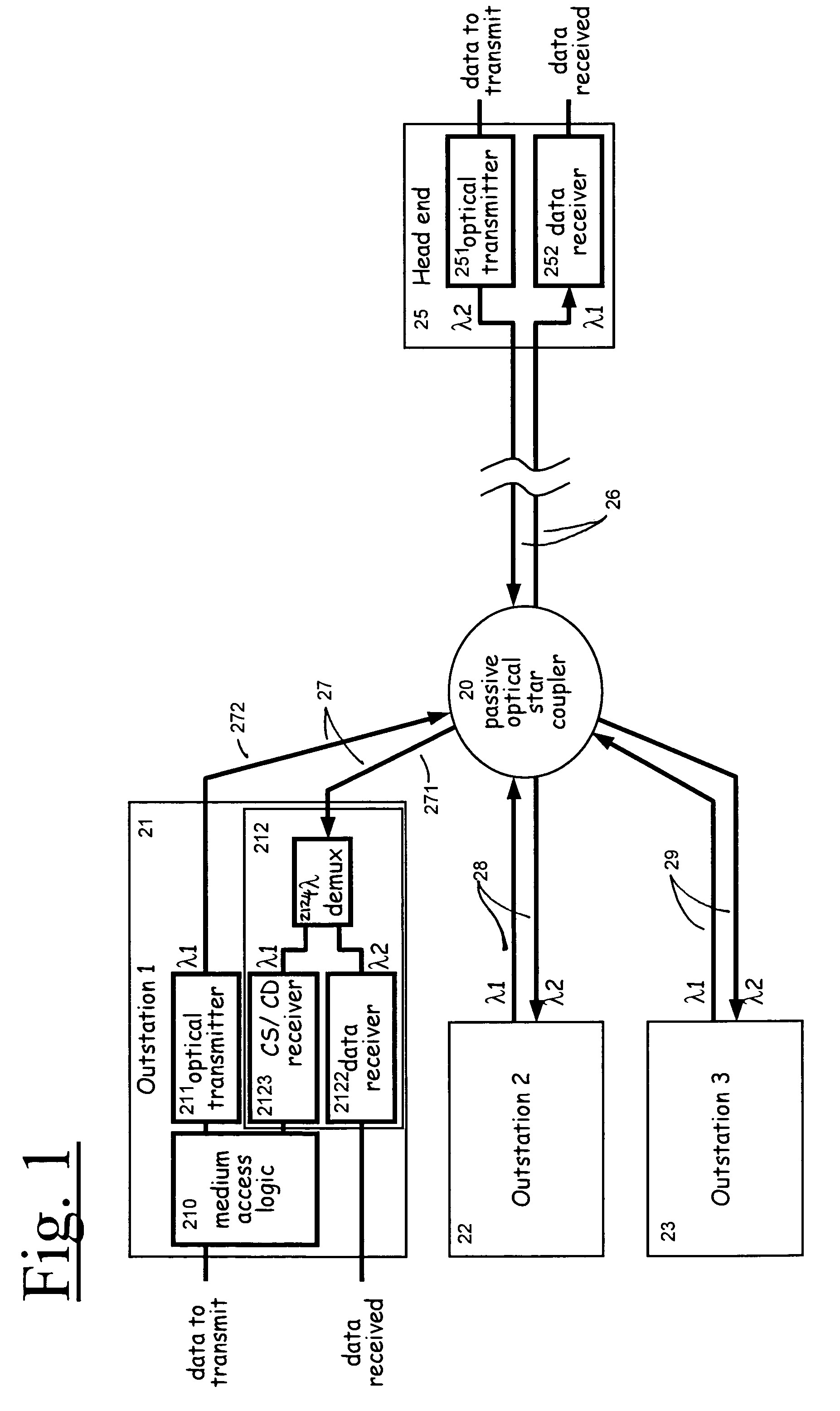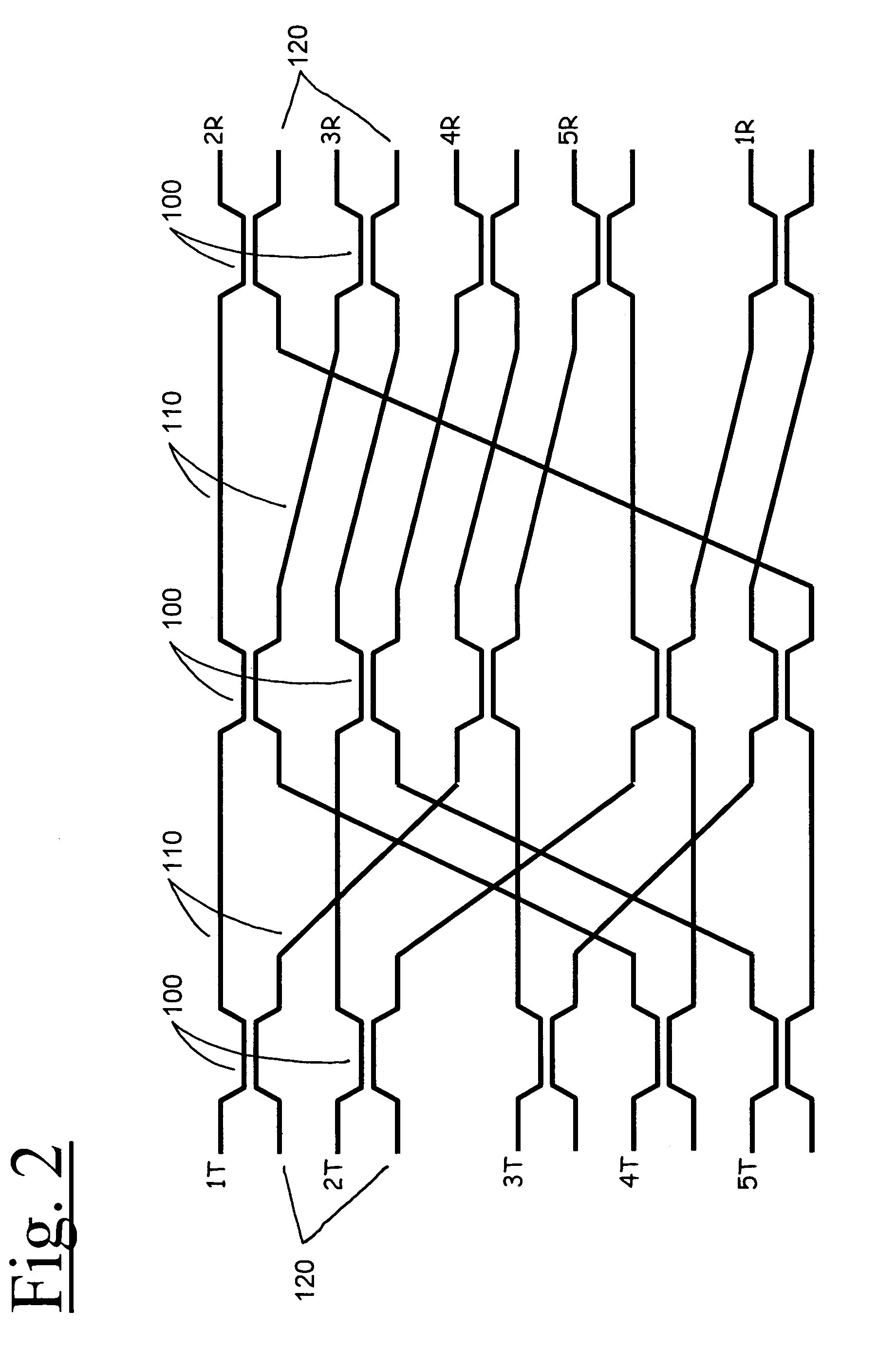High capacity passive optical network
a passive optical network, high-capacity technology, applied in the direction of multiplex communication, electrical equipment, electromagnetic network arrangements, etc., can solve the problems of incompatibility between the physical size of the network and the minimum length of the transmitted packet, and the inefficiency of the network for short packets, so as to reduce the size and cost of the subscriber station equipment
- Summary
- Abstract
- Description
- Claims
- Application Information
AI Technical Summary
Benefits of technology
Problems solved by technology
Method used
Image
Examples
Embodiment Construction
[0074]Referring now to FIG. 1, there is shown a CS / CD network suitable for use as an access network, and comprising a single head end 25 connecting to a number of subscriber outstations 21–23 via a passive optical star coupler 20. Typically, the distance between any two outstations is assumed to be relatively small, perhaps 200 m, but the distance from the head end to the coupler may be much greater, for example up to around 5 km. The coupler may be located at a convenient point close to the subscribers' outstations (for example in a street cabinet) and, being a passive arrangment, requires no electrical power supply.
[0075]Each outstation comprises an optical transmitter 211 transmitting on frequency λ1 and controlled by a medium access logic unit 210, and an optical receiver arrangement 212 arranged to receive signals on both frequency's λ1 and λ2.
[0076]The optical receiver arrangement may receive signals on both λ1 and λ2, and splits them by means of demux 2124, providing the data...
PUM
 Login to View More
Login to View More Abstract
Description
Claims
Application Information
 Login to View More
Login to View More - R&D
- Intellectual Property
- Life Sciences
- Materials
- Tech Scout
- Unparalleled Data Quality
- Higher Quality Content
- 60% Fewer Hallucinations
Browse by: Latest US Patents, China's latest patents, Technical Efficacy Thesaurus, Application Domain, Technology Topic, Popular Technical Reports.
© 2025 PatSnap. All rights reserved.Legal|Privacy policy|Modern Slavery Act Transparency Statement|Sitemap|About US| Contact US: help@patsnap.com



